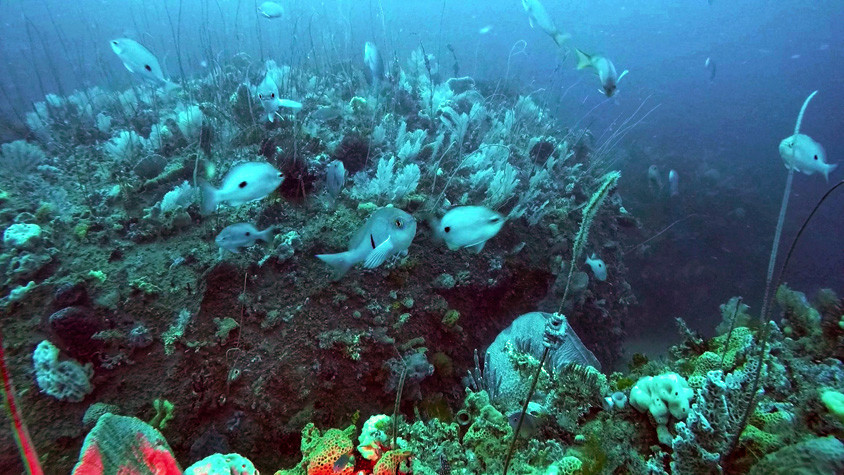Researchers from Parks Victoria and Australian Marine Ecology recently used remote-controlled robots to explore the waters of Wilsons Promontory National Marine Park, reaching depths of around 90 metres.
The team, led by Parks Victoria marine science manager Dr Steffan Howe, discovered marine communities on rocky reefs of a size and supporting a species richness far beyond their expectations; the reefs may even rival the diversity found in the Great Barrier Reef.
In particular, the team discovered a wide variety of filter-feeding, attached (or sessile) invertebrate species including a variety of corals, sea whips, colourful sea sponges and sea squirts, all of which rely on underwater currents to gain access to food.
The equipment used to film this hidden habitat – Remotely Operated Vehicles (ROVs) – had not previously been deployed in the area due to prohibitive costs, but Howe said that recent advancements made ROVs smaller and more affordable.
“There have also been some more recent technological developments that have made the equipment easier to use, including the development of goggles that allow the user to more easily view live footage from the ROV and to navigate the vehicle,” he said.
The exploration has followed on the heels of sonar mapping projects of the area conducted in partnership with Deakin University between 2013-2015, the data from which had revealed the presence of large structures deep beneath the ocean surface.
These discoveries prompted Howe and his team to undertake the “ground truthing” work that found the reefs at depths between 30 and 90 metres.

The team from Parks Victoria and Australian Marine Ecology used ROV technology to capture footage of coral reefs up to 100m below the ocean surface.
Ultimately, Howe hopes the footage he has collected can be referenced with the sonar data to produce an ecological map that can then be used for research and conservation purposes.
“When we have collected enough of this video footage we can relate what we’re seeing in the video to the sonar data and then model the marine habitats across the park,” he said. “Until recently, Wilsons Prom Marine National Park was the biggest remaining gap in the marine habitat mapping program for the state’s marine national parks and sanctuaries.”
An extensive and collaborative marine national parks mapping program was initiated across the state in 2003, but Wilsons Prom had not been catalogued due to inclement weather and the sheer size of the park.
“Waters in the marine park are particularly wild due to the strong currents that are present,” said Howe. “But it’s these currents that have actually made the region ideal for the sessile invertebrates to proliferate.”
Parks Victoria are not only pleased to discover what may be one of Australia’s most diverse reefs for the interest it will draw from the public, the very presence of the reef is a positive sign for the health of marine ecosystems in the region in general.
As Howe points out, not only are sessile invertebrates (such as those that make up the majority of species found in the reefs) critical for water filtration, they also provide important habitat for a host of other species including fish.
“Intact and diverse marine communities, both in terms of species diversity and genetic diversity, are also likely to be more resilient in the face of threats like disease, marine pests, climate change and various other threats, thereby providing some level of insurance for these communities and other connected communities.”
Howe noted that the depth of the reef and its unique assemblage of species may also make it less vulnerable to climate change compared to many of Australia’s shallow water reefs.


